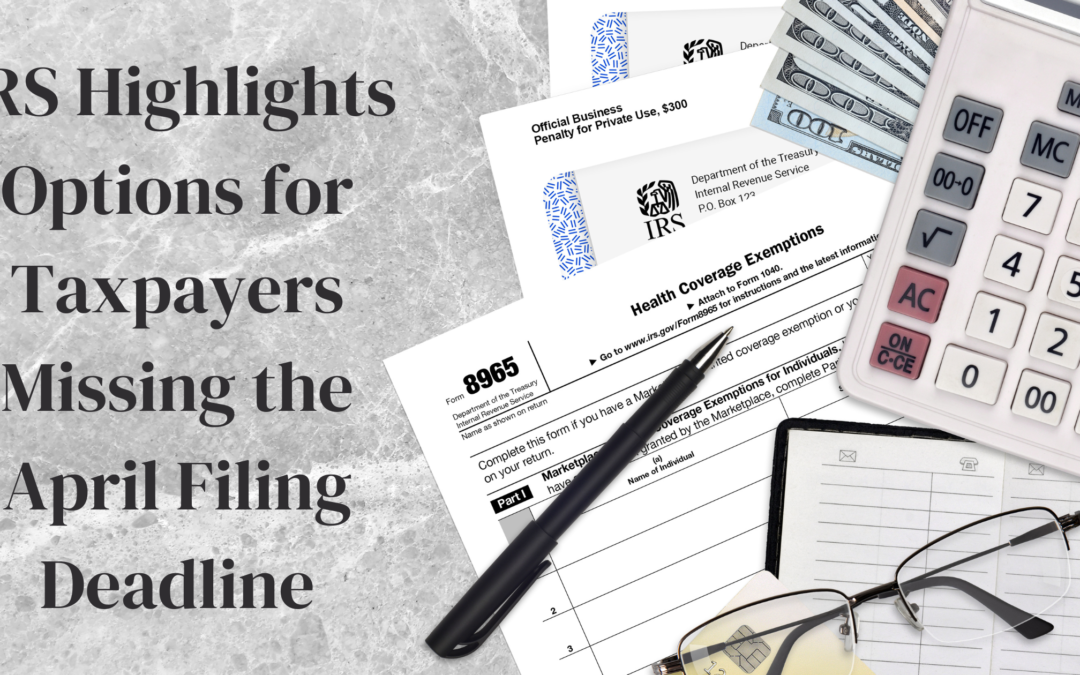Did you know even if you submit an extension to file your tax return later in the year that any balance is due by April (March if you are one of certain entity types? Are you struggling to pay the balance due? Did you know there are various options available to you to assist you with filing by the extension deadline?
As part of the ongoing efforts to assist taxpayers who missed the April deadline to file their 2023 federal income tax return, the IRS has highlighted several options available to help. The IRS offers important payment programs for those struggling to pay their owed amounts, along with special first-time penalty relief for qualifying individuals.
The IRS emphasizes that paying what you can as soon as possible will limit penalty and interest charges, which can accumulate rapidly. The current interest rate for unpaid taxes is 8%, compounded daily. The late-filing penalty is generally 5% per month, and the late-payment penalty is usually 0.5% per month, both maxing out at 25%. If a return is filed more than 60 days after the due date, the minimum penalty is either $485 or 100% of the unpaid tax, whichever is less.
You may want to pay your tax electronically with IRS Direct Pay being the fastest and easiest method. Several other electronic payment options are also available on the IRS website.
Filing and paying what you can as soon as possible is crucial to minimize penalties and interest. An extension to file provides an additional six months to submit your return, but it is not an extension to pay taxes owed. Penalties and interest will apply to taxes owed after April 15 and will continue until the balance is paid in full.
You may qualify for penalty relief if you have a balance due remaining. If you receive a penalty notice, read it carefully and follow the instructions for requesting assistance. If you have filed and paid on time for the past three years, you may qualify for a first-time penalty abatement. Even if you don’t qualify for this aid, you might still qualify for penalty relief if your failure to file or pay on time was due to reasonable cause and not willful neglect.
For those having trouble paying, the IRS offers various payment options. Filing by the deadline helps avoid failure-to-file penalties, even if you cannot pay in full. Explore options like short-term and long-term payment plans to manage the remaining balance. Short-term plans allow up to 180 days to pay, while long-term plans can extend up to 6 years with monthly payments. Interest and late-payment penalties continue to accrue, but the failure-to-pay penalty is reduced while an installment agreement is in place.
You may automatically qualify for extra time to file and pay without penalties and interest if you are located in a declared disaster area, living and working abroad, or are a military member on duty outside the U.S. and Puerto Rico, including combat zones.
To avoid tax-due surprises in the future, check your withholding annually. The Tax Withholding Estimator on the IRS website helps you ensure that the correct amount of tax is being withheld from your paycheck.
For more information on payment options and penalty relief, visit www.irs.gov.
IRS has options to help people who missed the April filing deadline | Internal Revenue Service
